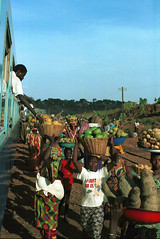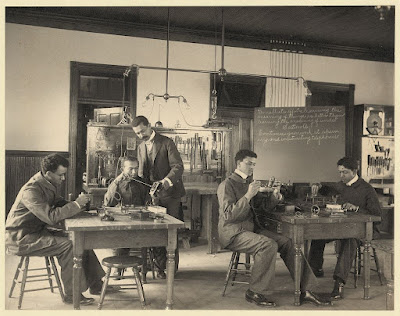When I started this blog, and indeed, this portion of my work on visual images, which I think I would need to track back to a point after I had finished my phd in visual culture at NYU Tisch in 1999 and even then after having come to live with mom and dad in 2007 after my sojourn in Ithaca as a visiting professor of African American Studies at Cornell University, I was convinced some visual representations, perhaps in particular certain genre of personal photographs, had a power to speak for themselves that no other medium could approximate. I now think that I was bias as well as wrong.
The bias came from the fact that in my family my grandmother, whom I knew as Momma Jones and Mme. Willi Posey) and my mother were ardent collectors of family photographs mostly for professional work reasons. My grandmother collected photos of her fashion shows and photo shoots and my mom collected photos of herself documenting the various stages of her life, which she commemorated most vividly in her Change: 100 Pound Weight Loss Story Quilt of 1986, of art related events, of art, and art projects and performances. Even my grandmother's earliest photograph collection, which were executed by professional photographs who were friends--there were many photography studios all over Harlem, and maybe all over the South--document the clothes that she made for her children when she was still confined to being a stay at home mom to my mother, her older sister Barbara and her brother Andrew (both now deceased) in the 20s and the 30s.
My grandmother did not get to work professionally as a seamstress and a designer until late in the 40s after divorcing my grandfather Andrew, mom's father who drove a sanitation truck. This legacy of fashion, art and photography I suspect goes further back as well to my grandmother's grandmother Betsy Bingham. In 1978 and then again in 1980 I interviewed Momma Jones at length. I had in mind to do a history of Harlem more in line with what was then known about the Harlem Renaissance, but actually what she talked about most was her family in the South and their lives in Harlem in the teens and twenties, which didn't really include the literary version of the Harlem Renaissance I was craving but rather the Harlem of the Lafayette theatre, the Savoy Ballroom and other performance venues. Which is also why I was so delighted by Toni Morrison’s version of Harlem in her novel Jazz, which wasn’t about the literary stars but about the ordinary people. On the other hand, it was also a Jazz composition in words as well.
Momma Jones had aspired to be a dancer as a young woman and participated in dance contests with her childhood friend and boyfriend Thomas Morrison, which she says they often won. Momma Jones would surprise Tommy by marrying a recent transplant from Tampa, which he had introduced here to, named Andrew Jones. After Andrew and Momma Jones broke up, Mr. Morrison (what I called him as a child) began to keep company again with Momma Jones. He was in fact my godfather and a grandfatherly figure as well as my actual maternal grandfather Andrew. He had married a friend of Momma Jones and they all remained friends.
What makes me think that this fashion and photography self conception goes back at least to Betsy is the way my grandmother referred to her grandmother. In the interview she said "Betsy had everything." Who refers to their grandmother as Betsy! But slowly with scrutiny of the family history and genealogy I understood that shes was referring to Betsy Bingham who had been born a slave, a dressmaker and who died not until she was 100. Her mother and her, both quilters, lived together until Susie Shannon's death at about 100.
To return to the point, I think I was so struck by the power of these photographs mainly because I had not had a chance to see them from the time my grandmother died, when I was 29 (1981) until after I returned from Ithaca and came to live with mom and dad in Englewood. At that point, mom gave me basically unlimited access to her photographs. She said, with a tone of resignation, I have done all I can to keep them save. Now it is your turn.
I went a little crazy with joy. To see many pictures I hadn't seen in 27 years. And to see pictures I could only have imagined and never seen. Oh my gosh, as I looked at them, I could hear the people talking, I could read what they were saying in their faces. Or so I thought. But that was an illusion, an expression of my deep longing to be reunited with these people I had known and known of as a child, and the images which my grandmother readily shared with me. She had a large breakfront in her living room with draws and doors. Inside were all her albums organized neatly according to her categories. Sometimes she used them to work with customers who wanted clothes made. When she died and I got sick, all of that disappeared from my life.
What my mother did, which is what people often do with inherited photographic collections is that she removed all the photographs from the photo albums, thus destroying whatever information Momma Jones left via the arrangements she had. When I finally got to the pictures, there was one album filled with small shorts of my grandmother wearing her clothing. These were glued to the album so it had been impossible to remove them. This book was particularly helpful, obviously composed around the same time that my grandmother did the clothing for my aunt’s wedding in 1950. The photos, themselves, were taken by Mr. Morrison, who was also in some of them wearing a tuxedo. Rather my mom had organize them as she wished, inadvertently removing or diminishing the prominence of images that presented her with problems of interpretation or with unpleasant feelings. We all do this. It can’t be helped. But in the process, whatever information the last collector, in this case my grandmother, mom’s mother, left is lost.
Eventually one day, the pictures will come into the hands of someone who has no idea who any of the people in the photographs are. In fact I have such an album I inherited from my father’s side of the family from his mother. I suspect one album is composed of photos related to the family of her second husband, not my grandfather, whom we knew as Chiefie in Jamaica. There are two lanky black males, twins I suspect, often featured in the photos. Could Chiefie have been a twin. Have been wanting to reunite these photos with the only person I still know who would know but there are so many strands to pursue. It is true of course that some photos, in and of themselves, are more eloquent. We think of these as art as well. But the art comes in I think to the degree that the maker of the image has been able to disguise or smooth over the explicit content in favor of the content of the imagination.
Primarily my mom’s organization was centered around separating photos of her from photos of everyone else--models, family friends, and other family. Some of the photographs of my grandmother became a part of that collection but not many, and mostly in regard to my grandmother’s collaboration with my mom on her art. After all, even when family photos are requested by writers or media, the purpose is an illustrative one. You worked with your mother? Do you have any pictures of you working with your mother? .
My mother was 50 years old when her mother died, 51 years old when her sister died in 1982. I think her actions were generated by the emotional pain of this process. Also she would begin to put the photos to good professional use. Mr. Morrison, who married my grandmother in 1978 I think, outlived my grandother to marry again. We all think that Mr. Morrison took with him some of the earliest pictures of Momma Jones, particularly of her dancing days, and maybe days of dancing with him. I distinctly remember pictures of Momma Jones doing head stands, and splits and other kinds of gymnastic moves. He lived in Setauket. He then died of Alzheimers whereupon I assume this third wife and her famly inherited the photos.
I don't know who he married or how to catch up with those pictures. But my topic here is the realization that the pictures don't in fact narrate themselves and never do. It is very very important that we tell the stories about the photographs we have, regardless of how powerless and overwhelmed we feel about that task. The photos need our help. I remain fascinated however by what we think we can see in a photograph without specific instruction as to its contents.
I don't think there could be a time in which this realization that images need narrative explanations is more important. In the situation of Black Lives Matter, George Floyd's death and Me Too, I can't think of anything more urgent for those of us who are older to understand and to pass onto those who are younger. We all watched on video as a police officer held his knee on George Floyd's neck for over 7 minutes, which resulted in his death. And yet now we must endure a discussion of what should become of this guy, what is he guilty of which corresponds to our penal code. What is there to discuss? We all saw the pictures, the moving pictures.
Another recent instance was the storming of the Capital, which has precipitated endless discussion and gathering of evidence. Who were these people? Well we saw them, didn't we? Yes but who were they and what were they about? This discussion will go on and on until all several hundred of them are rounded up and even then the discussion around them, even their convictions may be mired with ambiguities.
Because this ambiguity lies at the very basis of what our species is about. Our species is about language. And now that we are also equally about visual images and representations (digital etc), the words will need to catch up with the images. There is nothing unambiguous about images. Or maybe the way to put it is that there is nothing about which we all agree in regard to the true meaning and nature of images. And so I have found my reason and motivation for continuing to write in the age of images. In particular the seemingly least ambiguous images--documentary and portrait photography and documentary and ethnographic film--require the most explanation.
Works of art, even those which includes photos and film, at least are brought to us through an effort of interpretation on the part of the artist. In other words, they are skewed to a certain effect. I call that effect or is it affect: art.























